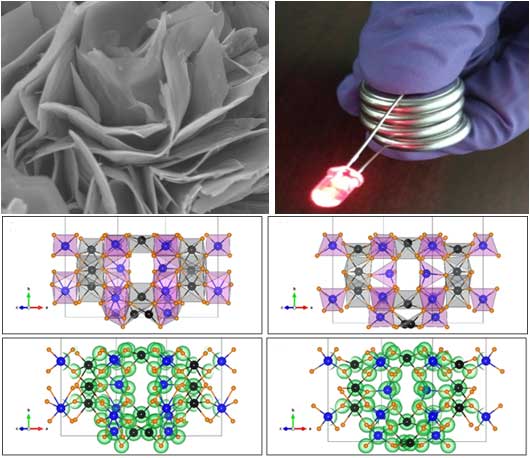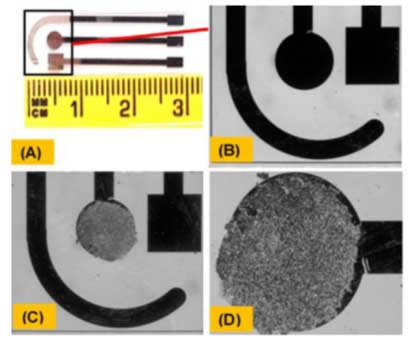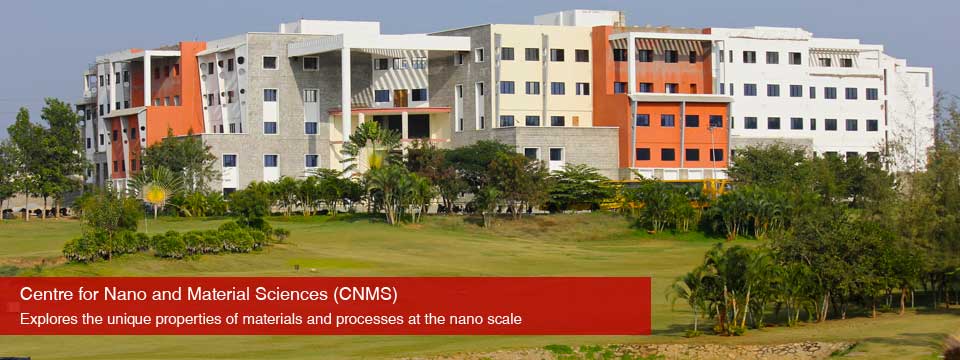Research activities and about the group
Research activities of our group include on different fundamental properties of nanomaterials and their applications in energy storage, chemical and biosensors, electrical and electrochemical devices. We employ both chemical and physical techniques such as chemical vapour deposition, plasma enhanced CVD, pulsed laser deposition, arc discharge and solvothermal methods for the preparation of novel nanomaterials and their hybrids. In recent years, our group is actively working on various graphene analogue 2D transition metal chalcogenides such as VS2, WS2, SnS2, MoS2 and VSe2 etc. and their nanocarbon hybrids for high performance energy storage devices, biosensors and field emission applications. We study these materials and its hybrids for different device applications by tuning its number of layers, crystal structure, phase, morphology and oxidation states etc. We also investigate the role of nanocarbon materials on the phase, morphology and crystal structure of these materials in the composite. We are also actively involved in collaborative research both in India as well as in abroad.

Ongoing research activities on 2D materials |

Energy materials and supercapcitors
|
Ongoing research activities: Ongoing research activities in our laboratory is devoted to design and fabricate novel advanced two-dimensional functional and energy materials. We are actively involved in the applications of these materials for energy storage and micro-supercapacitors, chemical and biosensors and electronic devices. To corroborate our experimental observations, we employ fundamental properties and theoretical simulations by investigating the interactions and charge transfer processes involved in the hybrid materials.
Thrust I: Design of novel 2-dimensional binary and ternary functional nanostructures and graphene hybrids for supercapacitor applications
The ever-growing energy demand has greatly stimulated research on exploring high-performance electrode materials for energy-storage devices. Supercapacitors, also known as electrochemical capacitors, have been considered as one of the most promising energy-storage devices because of their many advantages as compared to the conventional capacitors, including high power density and longer lifespan. Supercapacitors hold great potential as power sources for applications requiring fast bursts of energy or as back-up power sources in electric vehicles. However, the performances of the conventional supercapacitors based on rigid electrodes are limited due to the lack of the desired electrode porosity and low capacity. Moreover, optimum electron as well as proton conductivities are also necessary to achieve high performance. These factors in turn depend on the physical nature of the electrode material, for instance nanoparticles are known to possess higher capacitance and can form flexible electrode structure as compared to its crystalline form. Therefore, it is extremely important to tune the structure of the electrode material. Flexible materials for energy storage devices have recently received great interest in many emerging wearable or rolling-up modern gadgets, such as electronic papers, collapsible displays and other personal multimedia devices. Hence, these applications require highly efficient electrode materials with good electrochemical properties, high mechanical integrity upon bending or folding and lightweight property. In particular, the capacitance of a supercapacitor is determined by the surface area of the electrode, which is accessible for the electrolyte. Due to the upcoming demand for high power and high energy for several applications (stationary, load levelling, hybrid concepts, etc.) supercapacitors with 1D and 2D carbon materials, such as carbon nanotubes (CNTs), carbon nanofibers (CNF), graphene, reduced graphene oxides (RGO) and their composites with nanostructured binary metal oxides and sulphides have recently attracted attention. The above class of composite electrode shows excellent electrochemical performances and they can be tailored to form flexible and free-standing electrodes. We aim to develop high performance as well as flexible and free-standing electrodes based on 2D carbon materials (graphene) and their hybrids with nanostructured ternary metal sulfides for energy storage devices and supercapacitors.
Thrust II: Electrochemical Sensing of biomolecules using 2D TMDs Materials/Metal nanoparticle hybrids
Nano-sized biosensors are able to detect and communicate with even the smallest building blocks of life such as DNA and single cell. Biosensors based on nanomaterials exhibit enhanced chemical, electrical or electrochemical properties compared to their bulk counterparts. The concomitance of improved material properties and biocompatibility has permitted nano biosensors to reach lower detection limits and higher sensitivities. Unique properties of graphene have created a great opportunity for developing them as popular candidate for fabrication of novel chemical and biosensors. Our research aims to fabricate efficient on-chip biosensors based on graphene, 2D TMDs and their hybrids with Au, Ag, Pt nanoparticles.

(A) Photograph of photolithography patterned Pt electrode. Optical micrograph of (B) Patterned three electrodes (C, D) Graphene modified Pt electrode surface and its magnified view. |
Thrust III: Electrical and field emission properties of two-dimensional layered materials and hybrids
Electron field emission (FE) of nanomaterials has gained considerable interest in recent years since they have potential applications in flat-panel displays, vacuum microelectronics, etc..But FE properties of 2D layered structures have not been studied extensively though there are few reports on FE properties of graphene and few TMDs. Our work is aimed to develop high-field enhancement 2D materials with low threshold fields at low cost suitable for industrial-scale production. Further, DFT studies will be performed to understand the mechanism and enhanced FE performance of the materials. Effect of strain, doping and overlapping of the electronic states etc. will be employed to tune the work function and to achieve enhanced electrical properties. |
|



